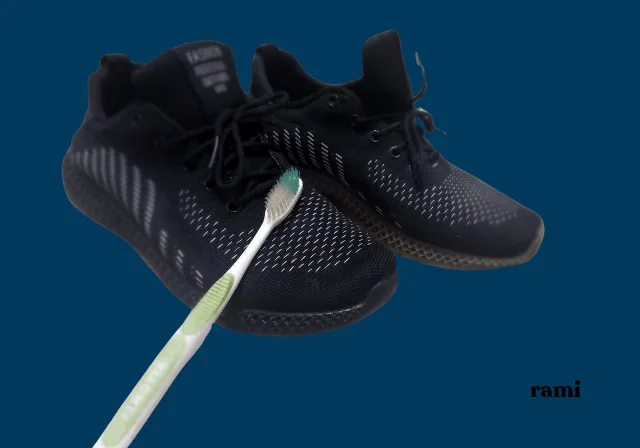
Co-authored by:
Charlie
Shoe Care Specialist
2025
How to Fix Painful Shoes
There are several reasons why shoes can be painful, but the solution is simple.
Some shoes can be painful to wear, although they shouldn’t be if you’re wearing a good brand. However, before you let your feet suffer from pain, soreness, and blisters, try the techniques mentioned in this article. Keep in mind that despite the many techniques to fix painful shoes, some shoes are poorly constructed, and it’s impossible to fix them completely. Finally, read this article to make your shoes pain-free—or at least a little more bearable. Let’s learn step by step how to fix painful shoes.
How to Fix Painful Shoes

1 Buy some specialized socks. Sometimes, wearing the right type of socks is enough to fix your painful shoes. These specialized socks provide support to your feet, wick away moisture, and help prevent itching and blisters. Here are some types of specialized socks that you can easily find. Let’s see what they can do for you:
- Athletic socks are tighter around the arch of your foot. This helps provide arch support, making them ideal for running shoes.
- Moisture-wicking socks will help wick away sweat from your feet. They will help keep your feet dry and prevent blisters.
- Running socks have extra padding on the bottom, which will help absorb the impact on your feet while running.
- Toe socks cover each toe separately and can help prevent blisters between the toes.
- Consider the material. Some materials, such as cotton, absorb sweat very easily, which can lead to blisters. Acrylic, polyester, and polypropylene help wick away sweat, which keeps your feet dry.

2 Tape your third and fourth toes together using medical tape. This can help reduce pain in the heel. When you wear heels and put pressure on them, the nerve between the two toes is compressed. Taping the toes together relieves some of the pressure.

3 Break in new shoes by wearing them at home. New shoes are painful at first because they are stiff, so walking around your house or neighborhood can help soften them. Take breaks if you feel pain while walking, and take your shoes off when they are too painful. Over time, your shoes can become softer and more comfortable.

4 Use a hair dryer to break in stiff shoes. Turn the hair dryer on the lowest setting and place the nozzle inside the shoe. Heat the inside of the shoe for a few minutes. Put on two pairs of socks and slip the shoe on. Once the shoe cools, it will mold to the shape of your foot. This method is effective, but only use it for shoes made of natural materials; it is not recommended for plastic and other synthetic materials.

5 Use a shoe stretcher to stretch your shoes. Spray it with shoe stretching spray, then place the stretcher inside your shoe. Turn the handle and knob until the shoe material is firm, then leave the stretcher in your shoe for six hours. When the time is up, turn the handle to the other side to shorten the shoe stretcher and remove it from your shoe. This is a great option for stretching shoes and also works for small loafers.
There are several types of shoe stretchers available on the market, including high-heel stretchers.
- A two-way stretcher may be the most effective, as it can stretch both the width and length of your shoe.
- Some shoe stretchers have attachments for bunions.
- Shoe stretchers can only loosen the shoe so that it does not feel tight; they cannot make your shoe a full size larger.
- Shoe stretchers work best on natural materials like leather and suede, which have some natural stretch. They are not as effective on materials that do not stretch, such as plastic or rubber.

6 Stuff the toe boxes with fleece or cotton balls. If your new shoes are too big and your toes keep sliding forward, try stuffing the toe box with fleece. This breathable, soft material will be more comfortable and less likely to ride up like tissue. You can also try some cotton balls.
7 To reduce friction between your shoes and feet, use some silicone gel dots or adhesive foam tape. Both can be purchased at shoe stores or drugstores. Silicone gel dots are clear and easy to disguise, but foam tape can be cut to the right size and shape. Measure, cut, and apply small pieces to any areas of your feet that rub against your shoes.
8 Use a silicone heel cup insole for painful heels. If your heel hurts, it may be because the back of your shoe is too stiff. Try adding a silicone heel cup or arch support insole. Trim both to the right size and glue them securely inside the shoe so they don’t slip out.
- When your shoes are tight, try to avoid discomfort by using thin insoles.
You Might Also Like
References
- American Academy of Dermatology – Prevent and Treat Blisters
- Johns Hopkins Medicine – Living with a Cochlear Implant
- Better Health Channel – Choosing the Right Shoe
- OrthoInfo (AAOS) – Tight Shoes and Foot Problems
- Cleveland Clinic – 5 Ways to Avoid Blisters and the Best Ways to Treat Them
- Penny Simmons, Shoe Care Specialist. Expert Interview. 19 November 2020.
- wikiHow – How to Fix Painful Shoes
About This Article

Co-authored by:
Charlie
Shoe Care Specialist
This article is co-authors: Charlie. Charlie is a shoe care expert in Los Angeles. Charlie has more than 20 years of experience in the e-commerce world, he has extensive experience in luxury product care. He is currently the Vice President of Bluetag’s Strategic Partnership, which helps customers find the product. Prior to Bluetag, he founded a dry cleaning and shoe care service, Butlerbox in Los Angeles, California.
Co-authors: 10
Updated: Apr 10, 2025




